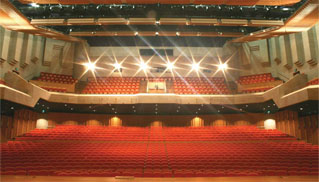Get In Early To Get It Right

- As Control And Automation Become Theatre Buzzwords, Advance Planning Is Key
- Arup is a holistic designer that tries to see the whole process of integating lots of disciplines in venue design. The company started out in structural engineering, but has since diversified into a wide range of building services. Now, as an extension of our well-established Arup Acoustics business unit, we are offering Venue Consulting a service to anyone building— or rebuilding—a theatre, concert hall, or similar performance venue. We offer our services not just to venue owners, but also to architects. Our job is to provide detailed technical knowledge and an understanding of how buildings are going to be operated by technical users.
- We have offices all over the world, and among our recent projects are the new opera house in Oslo, Norway,
the Kings Place recital hall in London, and Llewellyn Hall in Australia.
As with so many building projects, the sooner technical considerations are taken into account, the better. Things like structural and electrical loads need to be considered early so that they don’t come as a shock later on. The same goes for aesthetics. If you don’t give thought to how you’re going to integrate equipment from day one, then you’re going to have problems. The reason we so often see audio, AV, and lighting hardware flying in mid-air above the audience is that hasn’t been considered until it’s too late.
Different venues have different approaches to the way they want their technology to be installed. At a standard rock concert, you expect to see the technology—it’s almost part of the show. In architecturally considered environments, a much cleaner space is preferred. This is especially true of older buildings, but it can equally apply to new ones, too.
While architectural considerations have always influenced where we can locate technical equipment and the rigging that supports it, there are other, more recent factors at work. One of the main drivers for change has been the increase in awareness of health and safety, which has helped to ensure that rigging systems are adequately designed from the outset— which hasn’t always been the case. In theaters, a lot of rigging work is done by enthusiastic amateurs. This is a good thing, but when people’s knowledge is limited by their own enthusiasm, it can lead to dangers.

smallLlewellyn Hall motorized control systems in industry in general, and that technology has filtered down to theatres. We have control desks that give us a front end to control lots of motors— a bit like the scenery equivalent of an audio console. These systems are available off the shelf and can really enhance a performance.
These systems require a network infrastructure, much as digital audio systems do. If you’re designing a new building, you can put that infrastructure in to start with. When you’re refurbishing older venues, things become more difficult.
The big limiting factor is cost. The development of new performance systems tends to take place on the big rock-and-roll tours, because they have more money to spend. Smaller events struggle to afford the technology. It’s the same in the theatre world. Big opera houses have bigger budgets because a lot of their funding comes from government.
A daily selection of the top stories for AV integrators, resellers and consultants. Sign up below.
But the cost of computer control is falling, the equipment cost is also coming down, and the performance world is benefiting.
Arup’s George Ellerington has 20 years’ experience of working in theatre design and consultancy.
